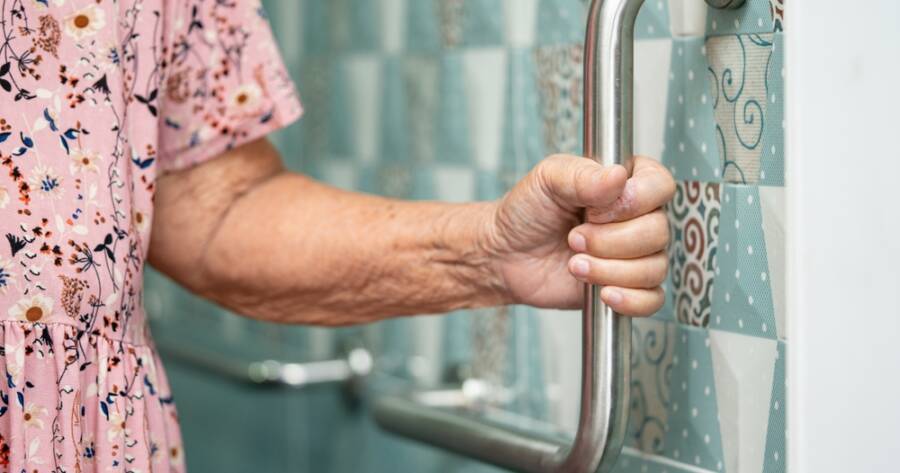Aging at home is a goal for many older adults, but it requires thoughtful planning to make the space both comfortable and safe. Falls, poor lighting, and accessibility challenges are common concerns as we get older—but they’re also preventable. Fortunately, you don’t need a full renovation to create a safer living environment. With a few smart upgrades, seniors can maintain their independence and peace of mind while reducing the risk of accidents.
Here are some of the most effective home safety improvements that support aging in place.
Improve Lighting Throughout the Home
Good lighting is one of the simplest yet most powerful safety upgrades for seniors. Vision changes are a natural part of aging, and poorly lit areas can easily lead to missteps or falls.
-
Use brighter bulbs in all rooms, especially hallways, staircases, and entryways.
-
Install motion-sensor night lights in bathrooms and along paths to the kitchen or bedroom for safe nighttime navigation.
-
Add under-cabinet lighting in the kitchen and task lighting in reading areas to reduce eye strain.
Lighting should eliminate dark corners and shadows, especially in high-traffic areas. Replacing bulbs with energy-efficient LEDs can also lower utility bills while keeping things bright.
Upgrade Bathrooms for Slip Prevention
Bathrooms are one of the most hazardous spaces for seniors due to hard surfaces and frequent moisture. A few key modifications can drastically reduce the chance of slips and falls.
-
Install grab bars near the toilet and inside the shower or tub.
-
Replace bathmats with non-slip rugs or adhesive safety strips.
-
Consider a walk-in tub or zero-threshold shower for easier entry and exit.
-
Add a raised toilet seat with arms for added stability and comfort.
If balance is an issue, a shower chair and a handheld showerhead can make bathing safer and less physically demanding.
Reduce Tripping Hazards in Living Areas
Falls are the leading cause of injury among older adults, and many of them happen right at home. Reducing clutter and tripping hazards is key to creating a safer environment.
-
Remove or secure loose rugs and runners with non-slip backing.
-
Tidy up electrical cords using cord organizers or by relocating lamps and appliances closer to outlets.
-
Rearrange furniture to create wide, clear walking paths, especially for those using walkers or canes.
-
Keep commonly used items within easy reach to avoid the need for step stools or bending.
Also consider the height of furniture—getting in and out of low-slung couches or chairs can be difficult. Chairs with firm cushions and armrests offer better support and stability.
Add Safety Features to Stairs and Entryways
If stairs are part of the home layout, they require special attention. Whether indoors or outdoors, stairs can be dangerous without the right supports in place.
-
Install secure handrails on both sides of any staircase.
-
Add anti-slip treads or strips to each step.
-
Improve lighting over stairwells and landings.
-
Use contrasting tape or paint to make step edges more visible.
For homes with multiple floors, a stair lift can be a worthwhile investment for seniors with limited mobility. At entrances, replace steps with ramps where possible and ensure that door thresholds are low or beveled to prevent tripping.
Consider Smart Home and Emergency Alert Technology
Today’s technology offers seniors more tools than ever to stay safe while living independently. Smart upgrades don’t need to be complicated—and they can offer both safety and convenience.
-
Install video doorbells or smart locks for added security and peace of mind.
-
Use voice-activated assistants to turn on lights, adjust thermostats, or make emergency calls.
-
Set up medical alert systems with fall detection or wearable panic buttons for immediate access to help.
Some systems even connect to family members or caregivers, providing updates or alerts if something seems off.
Creating a Safer, More Comfortable Home
Aging in place doesn’t mean sacrificing safety—it means adapting your environment to meet evolving needs. By making thoughtful changes, from brighter lighting to smart tech, seniors can enjoy their homes longer and more confidently. Whether you’re planning ahead or helping a loved one, even small upgrades can lead to a big improvement in day-to-day quality of life. Start with a safety assessment of the home and prioritize changes that reduce risk while increasing comfort and accessibility.

